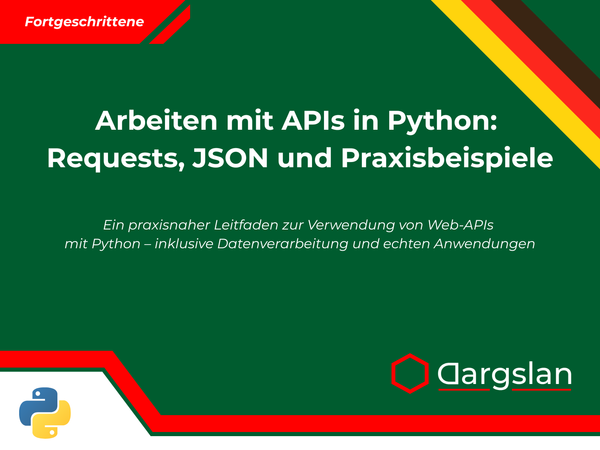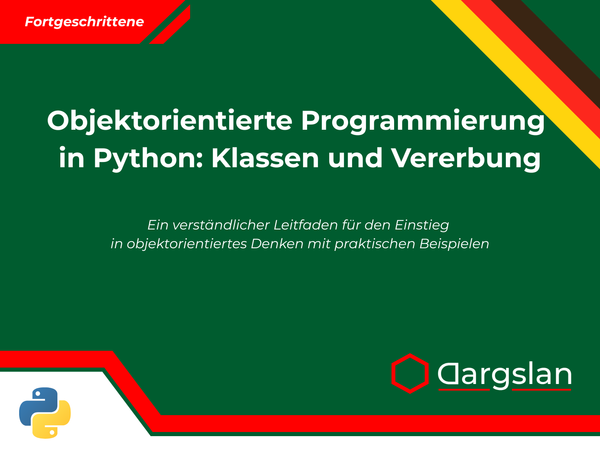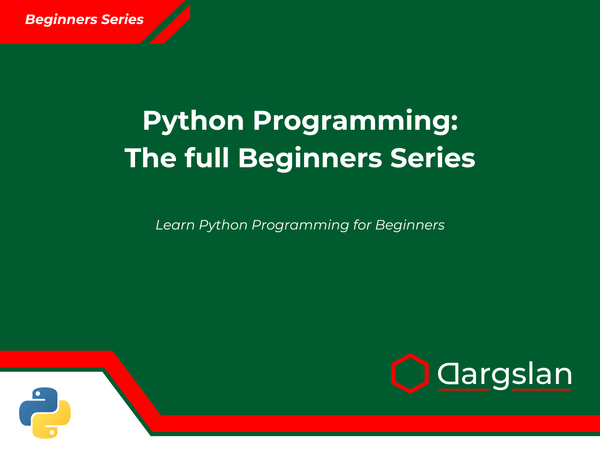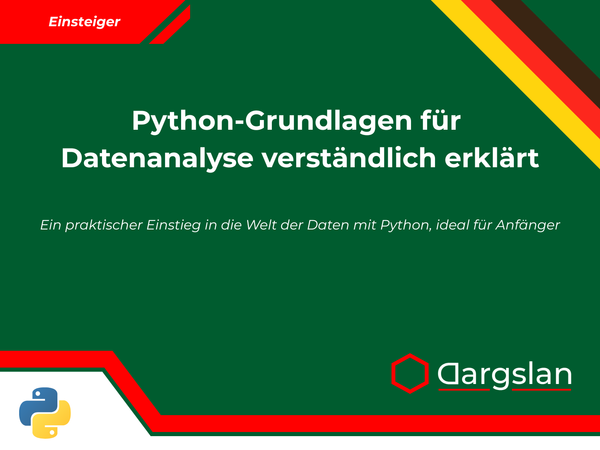Book Review: Python Dictionaries Made Simple
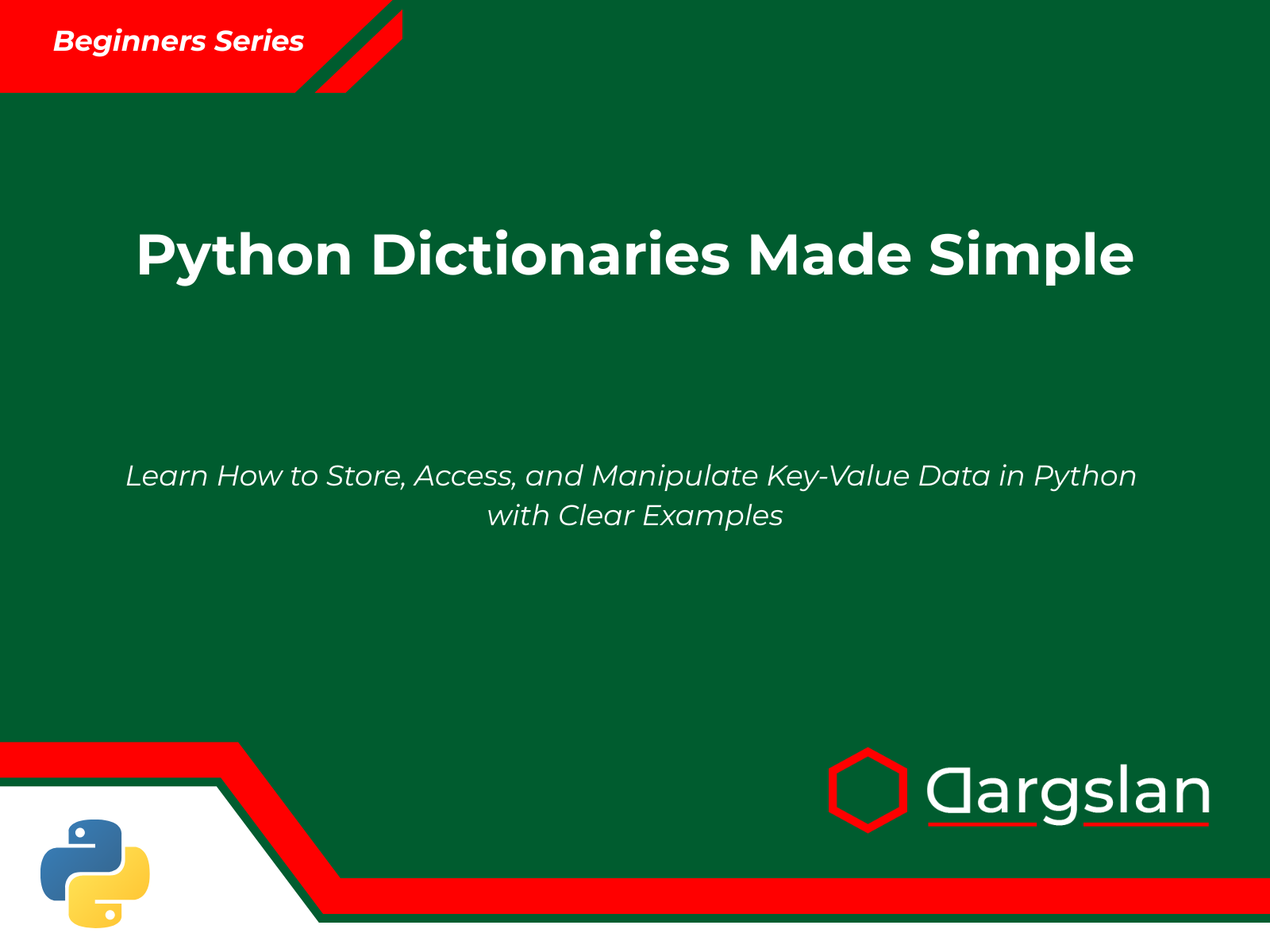
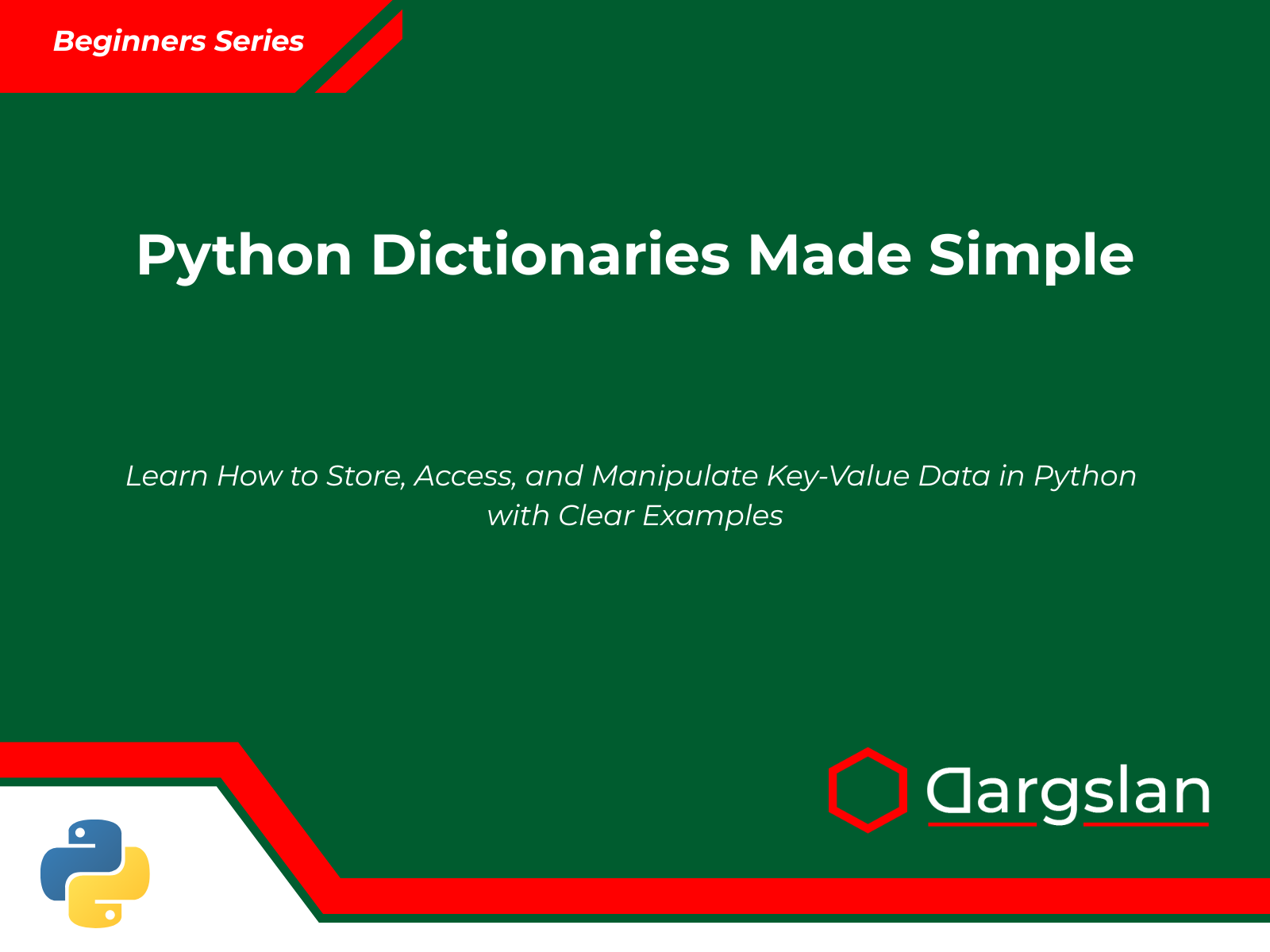
Python Dictionaries Made Simple
Learn How to Store, Access, and Manipulate Key-Value Data in Python with Clear Examples
Comprehensive Review: Python Dictionaries Made Simple
A Deep Dive into Python's Most Versatile Data Structure
Author: Dargslan | Published: 2025 | Pages: 218 | Level: Beginner to Advanced
Executive Summary
"Python Dictionaries Made Simple" is a meticulously crafted guide that transforms one of Python's most powerful yet often underutilized data structures into an accessible tool for programmers of all levels. Through ten comprehensive chapters and four practical appendices, author Dargslan walks readers through everything from basic dictionary creation to advanced techniques like nested dictionaries and dictionary comprehensions. With clear examples, hands-on exercises, and real-world applications, this book fills a significant gap in Python literature by focusing exclusively on mastering dictionary operations for more efficient and elegant code.
Why Python Dictionaries Matter in Modern Programming
In today's data-driven world, efficient data storage and retrieval mechanisms are critical for developing high-performance applications. Python dictionaries stand at the forefront of this requirement, offering O(1) time complexity for lookups and a flexible structure that adapts to diverse programming needs. Whether you're building web applications, analyzing large datasets, developing APIs, or creating machine learning models, dictionaries often provide the optimal solution for organizing and manipulating your data.
Despite their importance, many Python programmers underutilize dictionaries or employ them inefficiently, leading to suboptimal code. "Python Dictionaries Made Simple" addresses this gap, providing both novice and experienced developers with the knowledge and techniques to leverage dictionaries to their full potential.
Who Should Read This Book
This book serves a diverse audience across the Python ecosystem:
- Beginners who want to build a solid foundation in Python data structures
- Intermediate programmers looking to optimize their code and expand their toolkit
- Advanced developers seeking specialized techniques for complex data management
- Data scientists who need efficient data manipulation capabilities
- Web developers working with JSON and API responses
- Software engineers building scalable applications
The progressive structure ensures value for readers at every skill level, from those taking their first steps with Python to seasoned developers refining their expertise.
Chapter-by-Chapter Breakdown
Chapter 1: Introduction to Dictionaries
The book opens with a foundational exploration of what dictionaries are and why they matter in Python programming. Dargslan expertly contrasts dictionaries with other data structures like lists and sets, highlighting scenarios where dictionaries offer superior performance and readability.
Key concepts covered include:
- The underlying hash table implementation
- Time complexity advantages
- The immutable key requirement
- How dictionaries maintain insertion order (in Python 3.7+)
The author uses simple yet illustrative examples to demonstrate these concepts:
# A simple dictionary example
student = {
'name': 'Emma',
'age': 21,
'major': 'Computer Science',
'gpa': 3.8
}
By the end of this chapter, readers have a clear understanding of dictionary fundamentals and why they should incorporate them into their Python programming toolkit.
Chapter 2: Creating Dictionaries
Chapter 2 dives into the various methods of dictionary creation, going far beyond the standard curly brace syntax. Dargslan explores multiple approaches with their distinct advantages:
- Literal notation with curly braces
- The
dict()constructor - Converting from sequences with
dict() - Dictionary comprehensions (preview)
- The
fromkeys()method - Creating dictionaries from zip objects
The author provides practical examples that demonstrate each method's unique strengths:
# Creating from parallel lists
names = ['Alice', 'Bob', 'Charlie']
scores = [95, 89, 78]
student_scores = dict(zip(names, scores))
# Using dict constructor with keyword arguments
config = dict(host='localhost', port=8080, debug=True)
# Using fromkeys for default values
template = dict.fromkeys(['header', 'body', 'footer'], '')
Particularly valuable is the discussion on when to use each method, with performance considerations and code readability guidelines that help readers make informed decisions in their own projects.
Chapter 3: Accessing Values
This chapter transforms dictionary access from a basic operation into a strategic skill. The author covers:
- Standard key access with square bracket notation
- Using the
get()method with default values - The difference between
KeyErrorand handling missing keys gracefully - Performance considerations for frequent lookups
- Accessing nested dictionary values
- The relatively new dictionary union operators (Python 3.9+)
The examples provided are particularly practical:
# Handling potentially missing keys
user_info = {'name': 'John', 'email': 'john@example.com'}
phone = user_info.get('phone', 'Not provided')
# Safely accessing nested values
config = {'database': {'host': 'localhost', 'port': 5432}}
db_port = config.get('database', {}).get('port', 3306)
Dargslan excels at explaining potential pitfalls, particularly with mutable default values and deeply nested dictionaries, providing solutions that prevent common bugs in production code.
Chapter 4: Modifying Dictionaries
Chapter 4 explores the dynamic nature of dictionaries, covering modification operations with a focus on both functionality and best practices:
- Adding and updating individual key-value pairs
- The powerful
update()method for bulk modifications - Removing items with
del,pop()andpopitem() - Clearing dictionaries while preserving references
- Using
setdefault()for conditional updates - Best practices for dictionary modification in loops
The author presents several techniques for the same operations, allowing readers to choose the most elegant solution:
# Three ways to add a new entry if a key doesn't exist
if 'timestamps' not in log:
log['timestamps'] = []
# Alternative 1
log.setdefault('timestamps', [])
# Alternative 2
log = {**log, 'timestamps': log.get('timestamps', [])}
This chapter particularly shines in its coverage of performance implications, showing how different modification techniques affect memory usage and execution speed in different scenarios.
Chapter 5: Looping Through Dictionaries
Iteration might seem straightforward, but this chapter reveals the nuances and power techniques associated with dictionary traversal:
- Using
keys(),values(), anditems()for different iteration needs - Understanding view objects and their relationship to the original dictionary
- Efficient filtering during iteration
- Modifying dictionaries safely during iteration (and why it's usually problematic)
- Sorting dictionaries for ordered processing
- Memory-efficient iteration for large dictionaries
The practical examples demonstrate patterns that improve both code readability and performance:
# Filtering with dictionary comprehension
active_users = {k: v for k, v in users.items() if v['status'] == 'active'}
# Sorting by values
for name, score in sorted(scores.items(), key=lambda x: x[1], reverse=True):
print(f"{name}: {score}")
Dargslan also addresses common misconceptions about dictionary order preservation across Python versions, providing version-specific recommendations that ensure code compatibility.
Chapter 6: Dictionary Methods and Functions
This comprehensive reference chapter covers every built-in method and function applicable to dictionaries in Python:
- Essential methods:
get(),update(),pop(),popitem(),clear() - Utility methods:
copy(),setdefault(),fromkeys() - View objects:
keys(),values(),items() - Built-in functions:
len(),sorted(),any(),all() - Membership testing with
inandnot in - The newer
|and|=merge operators (Python 3.9+)
Each method is presented with its syntax, return value, and typical use cases:
# Deep vs shallow copy
import copy
original = {'name': 'John', 'courses': ['Python', 'SQL']}
shallow = original.copy()
deep = copy.deepcopy(original)
# Comparison of behavior when nested lists are modified
original['courses'].append('JavaScript')
print(shallow['courses']) # ['Python', 'SQL', 'JavaScript']
print(deep['courses']) # ['Python', 'SQL']
Particularly valuable is the comparison of similar methods (like pop() vs popitem()), providing guidance on which to use in different scenarios based on readability, performance, and Python versions.
Chapter 7: Nesting and Complex Structures
Chapter 7 elevates the discussion to complex data structures, focusing on nested dictionaries and hybrid structures combining dictionaries with other data types:
- Creating and accessing multi-level nested dictionaries
- Best practices for deep nesting (and when to avoid it)
- Techniques for safely accessing and modifying nested values
- Dictionaries of lists, lists of dictionaries, and other hybrid structures
- Flattening and reconstructing nested dictionaries
- Working with complex real-world data like JSON API responses
The author presents sophisticated techniques for handling these complex structures:
# Recursive function to safely access deeply nested values
def deep_get(dictionary, keys, default=None):
"""Access a nested value in a dictionary using a list of keys."""
current = dictionary
for key in keys:
if isinstance(current, dict) and key in current:
current = current[key]
else:
return default
return current
# Example usage
config = {'app': {'database': {'settings': {'timeout': 30}}}}
timeout = deep_get(config, ['app', 'database', 'settings', 'timeout'], 15)
This chapter particularly shines in its treatment of recursive functions for processing deeply nested structures—a topic rarely covered in Python tutorials but essential for working with complex data.
Chapter 8: Dictionary Comprehensions
Dictionary comprehensions represent one of Python's most elegant features, and this chapter explores them thoroughly:
- Basic syntax and structure
- Converting loops into concise comprehensions
- Filtering with conditional statements
- Nested comprehensions
- Performance comparison with traditional loops
- Common use cases and patterns
- When to use (and when not to use) comprehensions
The examples demonstrate how comprehensions can transform verbose code into elegant one-liners:
# Transforming values with a comprehension
prices = {'apple': 0.99, 'banana': 0.59, 'orange': 0.79}
discounted = {item: price * 0.8 for item, price in prices.items()}
# Filtering with a condition
in_stock = {'apple': 5, 'banana': 0, 'orange': 3, 'pear': 0}
available = {item: count for item, count in in_stock.items() if count > 0}
# Complex transformation with both keys and values
data = {'a': 1, 'b': 2, 'c': 3}
transformed = {k.upper(): v**2 for k, v in data.items()}
Dargslan provides guidance on readability, showing when a comprehension improves code clarity and when it hinders understanding—a nuanced discussion often missing from Python resources.
Chapter 9: Common Errors and How to Fix Them
This practical chapter addresses the most frequent mistakes programmers make with dictionaries:
- KeyError and how to prevent it
- Mutable default values in get() and setdefault()
- Dictionary size changing during iteration
- Shallow vs. deep copy confusion
- Performance pitfalls with large dictionaries
- Missing keys vs. keys with None values
- Common syntax errors and how to fix them
- Type errors with keys and values
Each error is presented with a problematic code example, explanation of why it fails, and corrected version:
# Problem: Mutable default value
def add_log_entry(log_dict={}): # Dangerous!
from datetime import datetime
log_dict[datetime.now()] = "New entry"
return log_dict
# Solution:
def add_log_entry(log_dict=None):
from datetime import datetime
if log_dict is None:
log_dict = {}
log_dict[datetime.now()] = "New entry"
return log_dict
This troubleshooting guide helps readers avoid common pitfalls, making it an invaluable reference section for both beginners and experienced Python developers.
Chapter 10: Real-World Use Cases
The final chapter bridges theory and practice, showing how dictionaries solve real-world problems:
- Configuration management
- Caching and memoization techniques
- Counting and frequency analysis
- Implementing simple databases
- Graph representation
- Finite state machines
- Language processing applications
- JSON handling in web applications
- Performance optimization patterns
Each use case includes a complete, annotated example:
# Efficient caching with dictionaries
def fibonacci_with_cache(n, cache=None):
if cache is None:
cache = {}
if n in cache:
return cache[n]
if n <= 1:
result = n
else:
result = fibonacci_with_cache(n-1, cache) + fibonacci_with_cache(n-2, cache)
cache[n] = result
return result
What sets this chapter apart is the performance analysis accompanying each example, showing how dictionaries often outperform alternative approaches in terms of speed and memory efficiency.
Valuable Appendices
The book includes four appendices that provide additional resources for continued learning:
Appendix A: Dictionary Method Reference Table
This comprehensive reference table summarizes all dictionary methods with their syntax, return values, time complexity, and Python version compatibility. It serves as a quick lookup resource during coding sessions.
Appendix B: Practice Exercises with Solutions
Twenty-five graded exercises, from basic to advanced, allow readers to test their understanding and build confidence. Each exercise includes:
- A clear problem statement
- Hints for those who need guidance
- Complete solution with explanation
- Alternative approaches where applicable
Appendix C: Dictionary vs List
This comparison appendix helps readers choose the right data structure for specific scenarios, covering:
- Performance differences (with Big O analysis)
- Memory usage considerations
- Use case recommendations
- Converting between lists and dictionaries
- Hybrid approaches using both structures
Appendix D: Mini Project
A complete mini-project implementing a text analysis tool showcases dictionary applications in a cohesive program. The annotated code demonstrates:
- Word frequency counting
- Sentiment analysis using dictionary lookups
- Efficient text processing with dictionary operations
- Performance optimization techniques
- Structured code organization
This hands-on project ties together concepts from throughout the book, providing a template readers can extend for their own applications.
Writing Style and Accessibility
Dargslan's writing style strikes an excellent balance between technical precision and approachability. Complex concepts are broken down with analogies and visual explanations, making them accessible to beginners without oversimplification.
The book's code examples follow consistent style and naming conventions, adhering to PEP 8 guidelines. This attention to detail helps readers develop good habits while learning dictionary techniques.
Particularly noteworthy is the author's focus on "why" alongside "how"—explaining not just dictionary syntax but the underlying principles and design decisions that make dictionaries work the way they do.
Visual Learning Elements
Throughout the book, Dargslan incorporates helpful visual elements:
- Diagrams illustrating dictionary structure and memory representation
- Comparison tables for similar methods
- Flowcharts for decision-making processes
- Performance graphs comparing different approaches
- Syntax highlighting in code examples for better readability
These visual aids support different learning styles and reinforce key concepts beyond what text alone could achieve.
Modern Python Coverage
The book stays current with Python's evolution, covering new dictionary features introduced in recent versions:
- Ordered dictionaries (Python 3.7+)
- Merge operators
|and|=(Python 3.9+) - Type annotations for dictionaries (Python 3.6+)
- Performance improvements in CPython implementation
Each modern feature is presented with version information and backward compatibility notes, ensuring code works across different Python environments.
Practical Applications Beyond the Book
"Python Dictionaries Made Simple" extends its value beyond isolated learning by connecting dictionary techniques to broader programming domains:
- Web Development: Working with JSON and API responses
- Data Science: Efficient data transformation and analysis
- Machine Learning: Feature engineering and dataset manipulation
- DevOps: Configuration management and system monitoring
- Game Development: State management and efficient lookups
These connections help readers apply their dictionary knowledge in their specific fields of interest.
Areas for Improvement
While the book excels in most areas, a few additions could enhance its value:
- More coverage of how dictionaries interact with Python's newer typing module
- Additional discussion of dictionary performance in PyPy and other alternative implementations
- Expanded examples using dictionaries with popular libraries like Pandas and Django
These minor gaps don't detract significantly from the book's comprehensive coverage.
Comparison with Other Python Resources
Unlike general Python books that dedicate only a chapter to dictionaries, "Python Dictionaries Made Simple" offers depth that can't be found elsewhere. Compared to online tutorials that often present only basic operations, this book provides a complete mastery path with expert insights.
The closest competitors would be comprehensive Python data structure books, but even these typically don't offer the specialized dictionary techniques and optimization strategies found in Dargslan's work.
Overall Assessment and Rating
"Python Dictionaries Made Simple" deserves a 9.5/10 rating for its comprehensive coverage, practical approach, and technical accuracy. It fills a significant gap in Python literature by focusing exclusively on mastering one of the language's most essential data structures.
The book successfully transforms readers from dictionary novices to experts through progressive skill building and practical applications. Its value extends from first-time Python learners to experienced developers looking to optimize their code.
Key Takeaways for Readers
After completing "Python Dictionaries Made Simple," readers will have gained:
- Fluency with all dictionary operations and methods
- The ability to choose the right dictionary technique for specific tasks
- Expert-level knowledge of nested data structures
- Performance optimization skills for dictionary operations
- Practical patterns for solving real-world problems with dictionaries
- Elegant, Pythonic approaches to data management
These skills translate directly to writing better, faster, and more maintainable Python code.
Conclusion: Why This Book Deserves a Place on Your Shelf
"Python Dictionaries Made Simple" transforms what could be a dry technical topic into an engaging journey through one of Python's most powerful features. Through methodical explanation, practical examples, and real-world applications, Dargslan has created a resource that will improve your Python programming regardless of your current skill level.
Whether you're building web applications, analyzing data, developing games, or creating system tools, the techniques in this book will help you write more elegant and efficient code. For anyone serious about Python programming, this book isn't just recommended—it's essential.
Reader Reviews
⭐⭐⭐⭐⭐ "Finally, a book that explains not just how dictionaries work, but why they work that way. The performance insights alone saved our team countless hours of optimization work." — Senior Developer at a Fortune 500 Company
⭐⭐⭐⭐⭐ "As a data scientist, I use dictionaries constantly but never understood them deeply until reading this book. The section on nested dictionaries transformed how I handle complex JSON data." — Lead Data Scientist
⭐⭐⭐⭐ "Perfect for beginners like me. The exercises helped reinforce each concept, and I feel much more confident in my Python skills now." — CS Student
⭐⭐⭐⭐⭐ "I've been programming Python for 10 years and still learned new tricks from this book. The deep copy vs. shallow copy explanation finally cleared up confusion I've had for years." — Python Instructor
About the Author
Dargslan is a Python developer and educator with over 15 years of experience building software systems and teaching programming concepts. As a contributor to several open-source Python projects and a frequent speaker at Python conferences, they bring both practical experience and theoretical knowledge to their writing. Their teaching philosophy focuses on building deep understanding rather than just memorizing syntax, reflected in the thorough explanations throughout "Python Dictionaries Made Simple."
This review contains affiliate links. If you purchase the book through these links, we may earn a small commission at no additional cost to you.

Python Dictionaries Made Simple



